「32キロ離れたら安全」米原子力規制委員長
2011.3.31 09:16
【ワシントン=柿内公輔】米原子力規制委員会(NRC)のヤズコ委員長は30日、米上院エネルギー・水資源開発小委員会で証言し、福島第1原発から約20マイル(約32キロ)以上離れた場所なら安全が確保できるとの見方を示した。
先週末に日本に滞在し、福島第1原発の現状などについて調査していたヤズコ委員長は「今のデータによれば、福島第1原発から約20マイル離れたら安全と判断できる」と述べた。
米政府は3月16日に福島第1原発から半径約50マイル(約80キロ)圏内に住む米国民に避難を勧告。日本政府は20キロ以内の住民に避難を指示していた。委員長はこれについて「当時入手できる情報に基づき、米政府は状況がより悪化する恐れがあるとみていた」と説明した。
NRCは米国内の既存原発の総点検に乗り出しているが、委員長は「耐震設計など米国内の原発の安全性を確信させる要素はたくさんある」と強調した。
小委員会で取材したのか、あるいは、元記事があるのか?
ググると、
Conflicting U.S. and Japan Evacuation Policies Sow Confusion
by Dennis Normile on 23 March 2011
・・・・・
To minimize the chance of exposure to hazardous levels of radiation from the crippled reactors, Japan has ordered everyone other than emergency workers to evacuate from the area within 20 kilometers of the plant. The government recommends that those living 20 to 30 kilometers away stay indoors.
"Japan's measures are in line with IAEA policy," Yukiya Amano, director general of the International Atomic Energy Agency, said at a press conference here on 18 March. He emphasized that IAEA's guidelines are recommendations; each country is free to set its own policy.
・・・・・
The current status of the pool, particularly whether it is leaking, is unclear, according to the latest posting on the situation by IAEA. But at a press conference here yesterday, Shunichi Yamashita, a radiation health expert at Nagasaki University's Atomic Bomb Disease Institute, said that at the moment someone living 31 kilometers from the plant is no more at risk of harm from radiation from the Fukushima plant than someone living in London. The United States's 50 mile recommendation "risks [creating] misunderstandings among Japanese." He added that he "could not understand" how the agency reached its conclusions.
To go along with its recommendation, NRC released a document containing calculated radiation doses at various distances from the plant, based on both a four-reactor and a single-reactor model. Based on a four-reactor model, NRC projected a dose of 150 milliSieverts (mSv) about 24 kilometers out, and, at the 80.5 kilometer limit, a relatively high dose of 99 mSv. A dose of 100 mSv, although it still has no immediate effects, elevates the risk of cancer. Meanwhile, radiation readings from Fukushima Province on 23 March, collected by Japan's Ministry of Ministry of Education, Culture, Sports, Science and Technology, show hourly doses about tens of thousands of times smaller than that, with a peak reading of about 0.1 mSv per hour at a station about 30 kilometers northwest of the plant. That elevated level is equivalent to a chest x-ray.
・・・・・
Meanwhile, other scientists are echoing Yamashita's request for NRC to shed light on its black box of a model. In a statement to ScienceInsider, Massachusetts Institute of Technology nuclear scientist Richard Lester said NRC should clarify how it reached its recommendation. U.S. officials "should be very careful to be sure of their facts before making official pronouncements, because when there are differences between what they are saying and what the Japanese government is saying there will inevitably be a negative impact on Japanese public confidence," he wrote.
23日の記事であるが、20キロの避難指示はIAEAの推奨する基準に適っている。31キロの地点に住んでいる人は、ロンドンに住んでいる人と同程度の放射能の脅威しかない、と。かえって、避難範囲を80キロにした根拠となるモデルを教えてほしい、と。
US Nuclear Chief: 20-Mile Evacuation Around Fukushima Is 'Safe Distance'
First Published Wednesday, 30 March 2011
By Tennille Tracy
Of DOW JONES NEWSWIRES
WASHINGTON -(Dow Jones)- The chairman of the U.S. Nuclear Regulatory Commission said Wednesday he believes a 20-mile evacuation zone around the Fukushima Daiichi nuclear plant in Japan represents a "safe distance," given radiation readings around the damaged plant.
"So far, the data coming out of the plant continues to show that a safe distance there is approximately 20 miles," said Gregory Jaczko, testifying before a hearing of a Senate Appropriations subcommittee.
Jaczko's comments follow the release of data from the U.S. Energy Department showing that most, if not all, of the elevated radiation readings were taken within 25 miles of the plant. The data also show that the highest levels of contamination extend in a northwest band from the plant.
Evacuation zones around the Fukushima power plant have been a source of controversy in recent weeks, in large part because the U.S. imposed a 50-mile evacuation policy on March 16 that went beyond Japan's call for a 12-mile zone.
But the U.S.'s decision to clear out citizens and military personnel within a 50-mile radius in Japan also raised questions about the US domestic evacuation policy, which requires only a 10-mile evacuation.
"Can we clear this up?" asked Sen. Frank Lautenberg (D., N.J.) Wednesday, whose state is home to the oldest commercial nuclear plant. "Why not require the same kind of evacuation plan to address the same distance here at home?"
Jaczko defended the U.S.'s domestic 10-mile policy, saying it was a "sufficient" distance to be used as a first response in the case of an emergency, before additional planning can take place. "That is not necessarily the end of any protective action."
Jaczko said his commission is likely to study U.S. evacuation policies during a series of reviews it is undertaking in the wake of the Fukushima disaster.
30日水曜日に、20マイルの避難距離は、現状の原発の放射線の検出量からすれば、安全な距離である、と。
たぶん、80キロというのは過剰反応の面があったのかもしれない。
もっとも、
飯舘村でIAEA基準超える放射性物質、避難区域の拡大圧力も
2011年 03月 31日
[ウィーン 30日 ロイター] 国際原子力機関(IAEA)は30日、事故を起こした福島第1原子力発電所から40キロの村で、避難基準を超える放射性物質が観測されたことを明らかにした。
この調査結果により、福島第1原発の20キロ圏内を超える範囲に立入禁止区域を広げるよう日本政府に求める圧力が強まる可能性がある。
IAEAのフローリー事務次長は、記者会見で「最初の評価は、(福島県)飯舘村でIAEAの避難基準を超えたことを示している」と語った。
また「われわれは注意深い状況判断を行うよう(日本に)勧告し、日本はすでに評価中であることを示唆している」と述べた。
飯舘村でIAEAの避難基準超す放射性物質
【ウィーン=末続哲也】国際原子力機関(IAEA)のデニ・フロリ事務次長は30日の記者会見で、福島第一原発から北西約40キロにある福島県飯舘村で、IAEAの避難基準を超す高いレベルの放射性物質が検出されたとして、日本側に状況を注視するよう促したことを明らかにした。
IAEAは今月18~26日、同原発周辺の各地で土壌の放射性物質(ヨウ素131とセシウム137)の量を調べ、飯舘村で1平方メートル当たり2メガ・ベクレルを検出した。これは、IAEAが避難勧告を必要とみなす基準の約2倍に当たるという。
(2011年3月31日11時08分 読売新聞)
IAEA suggests Japan widen exclusion zone near nuclear plant
By Shinichi Saoshiro and Yoko Nishikawa
TOKYO | Wed Mar 30, 2011 10:27pm
他人に言われてからやるようでは遅い。飯舘村の結果が出た時点で、避難地域について、現状におうじた改変を検討中とでも少なくとも発表すべきであった。情報発信が遅れることから、隠蔽しているのではないか、といった誤解が生じるもとになる。
土壌汚染マップ作成を
(2011年3月31日 読売新聞)
周辺地域だけではなく、全国規模で大気・水質・土壌・食品などの放射線情報を段取りがつきしだい調査し、随時発表していく予定である、と、表明し、そのように実行すべきだ。
海外で疑われているのは、周辺地域だけでなく日本全国なのである。
報道してくれない、という面もあるのかもしれないが、積極的な姿勢を打ち出すべきである。
そして、先手先手を打たないと誤解が生じる元になる。
更新
IAEA基準超の放射性物質
3月31日
IAEAでは、得られたデータを基に、この放射性物質による放射線が人の健康に与える影響の度合いについて計算したところ、IAEAが避難を促す基準の2倍に当たるとして、日本政府に対して状況を注視するよう求めています。ただ、IAEAでは、今回の放射性物質のデータはあくまで1か所、1回だけの調査で得られたもので、正確な実態をつかむにはさらに継続して調査を行う必要があるとして、今後、日本政府とも連絡を取り合いながら、分析を進めていきたいとしています。IAEA=国際原子力機関は、原子力施設の事故など緊急事態の際、屋内退避や避難などを行う目安となる放射線量を、安全基準として示しています。それによりますと、▽屋内退避の目安としては、全身に受ける放射線の量で、2日間以内で10ミリシーベルトまで、▽避難の目安としては、7日間以内で50ミリシーベルトまでとなっています。また、甲状腺に蓄積しやすい放射性ヨウ素については、甲状腺がんの発症率を上げる危険を考慮して、別に定めていて、甲状腺が受ける放射線の量で100ミリシーベルトを超える場合は、ヨウ素剤を飲むなどの措置を取るとしています。こうした目安は、住民の数が多かったり交通網が整っていなかったりして避難の徹底に手間取る場合などは、柔軟に対応してかまわないとしています。
IAEA勧告要請、安全委「国内判断問題なし」
福島原発
国際原子力機関(IAEA)が、高濃度の放射性物質が土壌から検出された福島県飯舘村の住民に対し、避難勧告を検討するよう日本政府に促したことについて内閣府の原子力安全委員会は31日、「国内では総合的に判断しており、現状の判断に問題ない」という見解を示した。
同委員会によると、日本では、空気中や摂取する飲食物に含まれる放射性物質の濃度などを測定し、人へ影響を考慮しているという。
代谷誠治委員は「我々は、人体に直接的に影響を与える所を評価しているので、より正確である」と説明した。
一方、経済産業省原子力安全・保安院も31日、飯舘村での累積放射線量を試算した結果、「いま避難する必要性はない」との見解を示した。
(2011年3月31日20時25分 読売新聞)
テレビで大気・水質など放射性物質は減少している、とのこと。










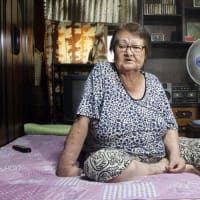
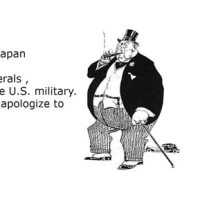


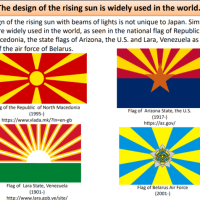
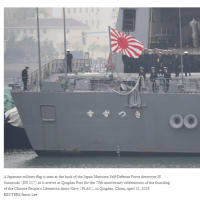
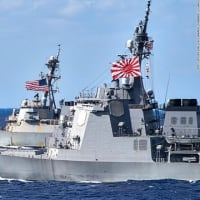
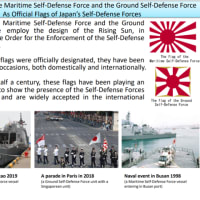
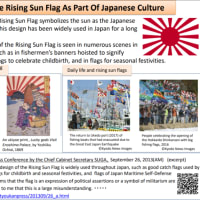
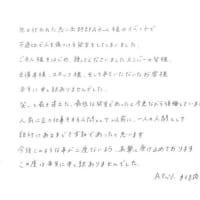
でも長期になるのは明らかで、放射能汚染から影響を防止するなら、出来るだけ避難させたほうがいいでしょうね。
少なくとも移動に手間取る老人、女性、子供などを先行して避難させておけば、最悪な事態となった場合でも、比較的スムーズに避難が出来るでしょう。
しかし世界中景気回復のニュースが飛び交う中、日本のニュースは危機的状況の原発や、放射線量を気にしなければいけないというのはなんともやるせません。
前の記事でも日本が貧しくなるというのがありましたが、長期にわたる放射能汚染で日本を迂回される様なら、世界の景気回復の波乗れず、没落して行く可能生も否定出来ません。
アメリカ軍も長期的に日本に駐留するか、見直しも始まるんじゃないかな。
人口構成がどうなっているのかわかりませんが、少なくとも学童疎開のようなものがあってもいいように思う。
後手後手になって国際世論におされて、というのは一番良くない。
私は米国軍は駐留を続けるとは、思います。地理的にいってそれほど重要な地域ではある。
しかし、経済的にはズタズタになる可能性がある。議員やマスコミがどれほど危機感をもっているのか。放射能よりそっちのほうが怖い。